Explainer: The volcano basics
All volcanoes are not alike, but all do deserve respect
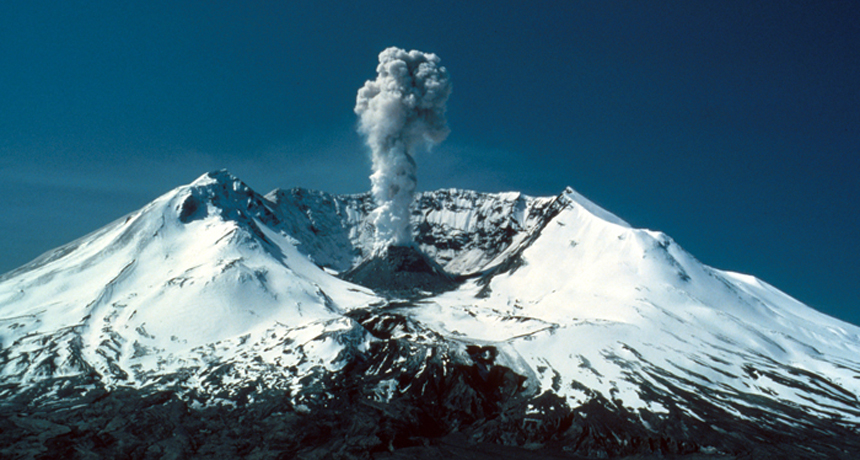
An ash burst coming from Washington’s Mount St. Helens in May 1982.
Lyn Topinka/ USGS
By Sid Perkins
A volcano is a spot in Earth’s crust where molten rock, volcanic ash and certain types of gases escape from an underground chamber. Magma is the name for that molten rock when it’s below ground. Scientists call it lava once that liquid rock erupts from the ground — and may start flowing across Earth’s surface. (It’s still “lava” even after it’s cooled and solidified.)
Roughly 1,500 potentially active volcanoes exist across our planet, according to scientists at the U.S. Geological Survey, or USGS. About 500 volcanoes have erupted since humans have been keeping records.
Of all volcanoes that have erupted in the past 10,000 years, roughly 10 percent reside in the United States. Most of them exist in Alaska (particularly in the Aleutian Island chain), in Hawaii and in the Cascade Range of the Pacific Northwest.
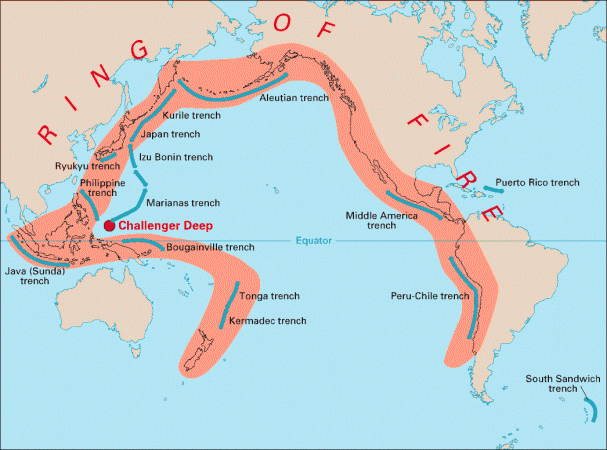
But volcanoes are not just an Earthly phenomenon. Several large volcanoes rise above the surface of Mars. Mercury and Venus both show signs of past volcanism. And the most volcanically active orb in the solar system is not Earth, but Io. It’s the innermost of the four largest moons of Jupiter. Indeed, Io has more than 400 volcanoes, some of which spew plumes of sulfur-rich material 500 kilometers (about 300 miles) into space.
(Fun fact: The surface of Io is small, only about 4.5 times the area of the United States. So its volcano density would be about comparable to 90 continuously active volcanoes erupting across the United States.)
Where do volcanoes form?
Volcanoes can form on land or below the sea. Indeed, Earth’s biggest volcano lies submerged a mile below the ocean’s surface. Certain spots on our planet’s surface are especially susceptible to volcano formation.
Most volcanoes, for instance, form at or near the edges — or boundaries — of Earth’s tectonic plates. These plates are large slabs of crust that jostle and scrape past each other. Their movement is driven largely by the circulation of the scalding, liquid rock in Earth’s mantle. That mantle is thousands of kilometers (miles) thick. It lies between our planet’s outer crust and its molten outer core.
The edge of one tectonic plate may begin sliding beneath a neighboring one. This process is known as subduction. The downward-moving plate carries rock back toward the mantle, where temperatures and pressures are very high. This disappearing, water-filled rock melts easily.
Because the liquid rock is lighter than the surrounding material, it will try to float back up toward Earth’s surface. When it finds a weak spot, it breaks through. This creates a new volcano.
Many of the world’s active volcanoes reside along an arc. Known as the “Ring of Fire,” this arc surrounds the Pacific Ocean. (In fact, it was the fiery lava erupting from volcanoes all along this boundary that inspired the arc’s nickname.) Along almost all sections of the Ring of Fire, a tectonic plate is shoving beneath its neighbor.
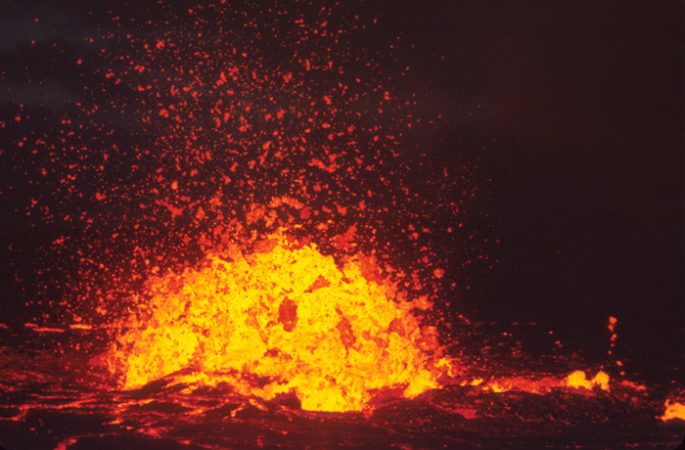
Many more of the world’s volcanoes, especially those located far from the edge of any plate, develop over or near broad plumes of molten material that rise up from Earth’s outer core. These are called “mantle plumes.” They behave very much like the blobs of hot material in a “lava lamp.” (Those blobs rise from the heat source at the bottom of the lamp. When they cool, they fall back towards the bottom.)
Many oceanic islands are volcanoes. The Hawaiian Islands formed over one well-known mantle plume. As the Pacific plate gradually moved northwest over that plume, a series of new volcanoes punched their way through to the surface. This created the island chain. Today, that mantle plume fuels volcanic activity on the island of Hawaii. It’s the youngest island in the chain.
A small fraction of the world’s volcanoes form where Earth’s crust is being stretched apart, as it is in East Africa. Tanzania’s Mount Kilimanjaro is a prime example. In these thin spots, molten rock can break through to the surface and erupt. The lava they exude can build, layer upon layer, to create tall peaks.
How deadly are volcanoes?
Throughout recorded history, volcanoes have probably killed about 275,000 people, according to a 2001 study led by researchers at the Smithsonian Institution in Washington, D.C. Scientists estimate that almost 80,000 of the deaths — not quite one in every three — were caused by pyroclastic flows. These hot clouds of ash and rock sweep down a volcano’s slopes at hurricane speeds. Volcano-triggered tsunamis likely triggered another 55,000 deaths. These big waves can pose a threat to people living along coasts even hundreds of kilometers (miles) from the volcanic activity.
Many volcano-related deaths happen in the first 24 hours of an eruption. But a surprisingly high fraction — about two in every three — occurs more than a month after an eruption begins. These victims may succumb to indirect effects. Such effects might include famines when crops fail. Or people may return to a danger zone and then die in landslides or during follow-up eruptions.
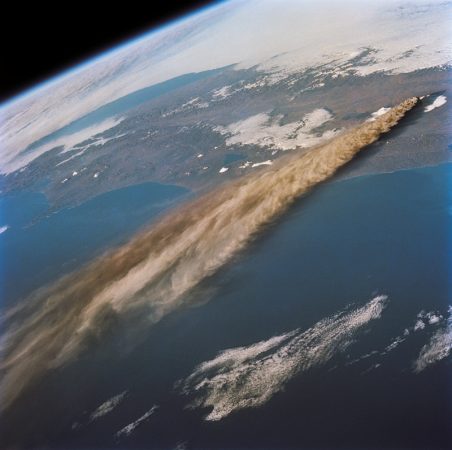
Each of the past three centuries has seen a doubling of fatal volcanic eruptions. But volcanic activity has remained roughly constant during recent centuries. This suggests, the scientists say, that much of the increase in fatalities is due to population growth or to the decision of people to live (and play) near (or on) volcanoes.
For instance, nearly 50 hikers died on September 27, 2014, while climbing Japan’s Mount Ontake. The volcano unexpectedly erupted. Some 200 other hikers escaped to safety.
How big can a volcanic eruption be?
Some volcanic eruptions amount to small, relatively harmless puffs of steam and ash. At the other extreme are cataclysmic events. These can last for days to months, changing climate across the globe.
Early in the 1980s, researchers invented a scale to describe the strength of a volcanic eruption. This scale, which runs from 0 to 8, is called the Volcanic Explosivity Index (VEI). Each eruption gets a number based on the amount of ash spewed, the height of the ash plume and the power of the eruption.
For each number between 2 and 8, an increase of 1 corresponds to an eruption that’s ten times more powerful. For example, a VEI-2 eruption releases at least 1 million cubic meters (35 million cubic feet) of ash and lava. So a VEI-3 eruption releases at least 10 million cubic meters of material.
Small eruptions pose a threat only to nearby regions. Small clouds of ash might wipe out a few farms and buildings on the slopes of a volcano or on the surrounding plains. They also might smother crops or grazing areas. That could trigger a local famine.
Larger eruptions pose different types of hazards. Their ash can spew dozens of kilometers from the peak. If the volcano is topped with snow or ice, lava flows can melt it. That can create a thick mix of mud, ash, soil and rocks. Called a lahar, this material has a consistency like wet, newly mixed concrete. It can flow far from the peak — and destroy anything in its path.
Nevado del Ruiz is a volcano in the South American nation of Colombia. Its eruption in 1985 created lahars that destroyed 5,000 homes and killed more than 23,000 people. The lahars’ effects were felt in towns up to 50 kilometers (31 miles) from the volcano.
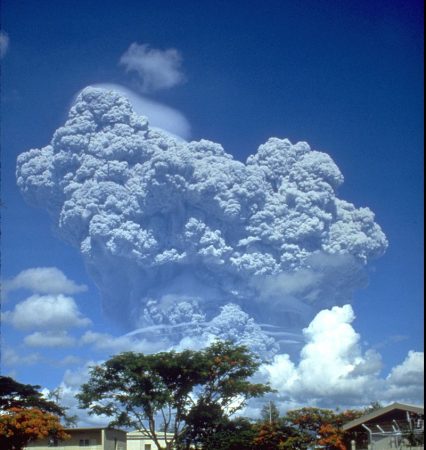
A volcano’s threats can even extend into the sky. Ash plumes can reach altitudes at which jets fly. If ash (which actually is tiny bits of broken rock) gets sucked into an aircraft’s engine, high temperatures there can re-melt the ash. Those droplets can then solidify when they hit the engine’s turbine blades.
This will disrupt the flow of air around those blades, causing the engines to fail. (That’s not something anyone would like to experience when they are several kilometers in the air!) What’s more, flying into a cloud of ash at cruising speed can effectively sandblast a plane’s front windows to the point that pilots can no longer see through them.
Finally, a really big eruption can affect global climate. In a very explosive eruption, particles of ash can reach altitudes above where rains are available to quickly wash them from the air. Now, these ash bits can spread around the world, diminishing how much sunlight reaches Earth’s surface. This will cool temperatures globally, sometimes for many months.
Besides spewing ash, volcanoes also emit a witches’ brew of noxious gases, including carbon dioxide and sulfur dioxide. When sulfur dioxide reacts with the water vapor spewed by eruptions, it creates droplets of sulfuric acid. And if those droplets make it to high altitude, they too can scatter sunlight back into space, cooling climate even more.
It’s happened.
In 1600, for instance, a little-known volcano in the South American nation of Peru erupted. Its ash plumes cooled global climate so much that many parts of Europe had record-setting snowfalls the next winter. Large portions of Europe also suffered unprecedented floods the next spring (when the snow melted). Heavy rains and cool temperatures during the summer of 1601 ensured massive crop failures in Russia. The famines that followed lasted through 1603.
In the end, this one eruption’s impacts resulted in the deaths of an estimated 2 million people — many of them half a world away. (Scientists didn’t make the connection between the Peruvian eruption and the Russian famines until several years after the 2001 study that estimated the death tolls from all volcanoes in recorded history.)







